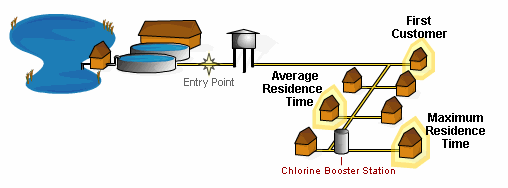Course Glossary
This shows the specialized terms used in EarthWise Academy. This section contains all the definitions used in the various course glossaries used by each course.
Special | A | B | C | D | E | F | G | H | I | J | K | L | M | N | O | P | Q | R | S | T | U | V | W | X | Y | Z | ALL
Entries starting with: M |
|---|
M SampleSample collected from the location in the distribution system with the maximum residence time.
|
M/DBPM/DBP – Microbial/Disinfectants and Disinfection Byproduct
|
M/RMonitoring and Reporting
|
Mandatory Health Effects LanguageSpecific health effects language required for primary MCL or MRDL violation, treatment technique violations and violation of the condition of a variance or exemption.
|
Maximum Contaminant Level
|
Maximum Contaminant Level GoalMaximum Contaminant Level Goal (MCLG) The level of a contaminant in drinking water below which there is no known or expected risk to health. MCLGs allow for a margin of safety.
|
Maximum ResidenceThat area of the distribution system where the water has the longest standing time and the longest contact time with a chemical disinfectant.
|
Maximum Residual Disinfectant Level
|
MCL
|
MCLGMCLG – Maximum Contaminant Level Goal The level of a contaminant in drinking water below which there is no known or expected risk to health. MCLGs allow for a margin of safety.
|
